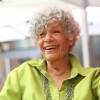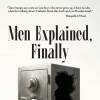As the numbers of coronavirus cases in China continue to rise, protests in the Chinese territory of Hong Kong have moved out of the media spotlight. But long-time observers of Hong Kong have indicated the virus might add more fuel to the protest fire: stoking accusations of local government ineptitude and distrust of Beijing.
Prior to the outbreak of the virus, Matthew Connors, a photographer and professor at the Massachusetts College of Art and Design made several trips to Hong Kong to capture the protests. During his first trip last August he was arrested.
“I was arrested on the periphery of protest,” he said, “And I was initially stopped by Hong Kong police officers because I was not wearing a press pass, which is not illegal. “
He was able to return to Hong Kong take more photographs, some of which were published in “The California Sunday Magazine.” https://story.californiasunday.com/hong-kong-protests-photos. Then, in early January, when Connors landed at the Hong Kong airport for his third visit to photograph the protesters, he was barred from entering.
The Chinese government did not reply to multiple requests for comment on his case. Connors was never told by Hong Kong immigration officials exactly why he was denied entry.
"(It was an) attempt on their part to really control the narrative,” Connors said.
Connors is not a photojournalist but rather a fine art photographer. So, he is free to manipulate his images, sometimes using techniques like collage. Given the vast numbers of photojournalists and citizen journalists who have been documenting the protests, Connors said he’s not contributing to the visual record or history of the protests. Instead he is looking to provoke what he calls an emotional response.
“I’m taking a somewhat different approach to them and not always beholden to the same rules and code of representational ethics,” he said.
He described several images from Hong Kong. His photo of the human chain that was formed by the residents of Hong Kong focuses on just a hand holding up a phone with a beacon of light, while another hand gently clasps the wrist.
“I thought there was just something really beautiful about that gesture and this sort of continuity of people touching one another,” Connors said.
A photo of residues on the ground that Connors said was probably a combination of fire and tear gas used on protesters is, at first glance, abstract.
“I’m trying to get people to think about and use their imaginations to think about things outside the frame as much as what they’re seeing in the picture,” Connors said.
He described a picture of what seems to be dancing smoke and paper bits from objects that had been burned on the street. “This one for me captures a sense of the chaos that was swirling around the events constantly,” Connors said.
Connors is now teaching a course on how make a book from photographic work. It’s a subject he knows well.
He won a prestigious International Center for Photography award in 2016 for his book “Fire in Cairo.” They are images from the 2013 uprising in which the government crackdown on protesters was deadly. By some estimates over a thousand killed. [Estimates vary but Human Rights Watch has higher end toll]
In Connors class the subject of risk came up. “How far do you think that it’s appropriate for artists to go?” asked photography major Ethan Hammerle.
“I think those risks are things that you need to personally define for yourself,” said Connors.
Connors has taken plenty of risks himself. In Cairo working among protesters, snipers, and police in riot gear, Connors said he was in a “cauldron of competing agendas that sometimes found expression in unpredictable violence.”
In Hong Kong he said he felt “less fearful.”
Outside the classroom, Connors’ students offered their own views on why China might be unhappy with their professor’s work.
“The fine art photographer has the skill and the know how to make a cohesive point,” said Ethan Hammerle, “so it’s not just the photo but the knowledge behind it.”
“It's getting their attention,” said senior Caterina Maina, “They're kind of worried about what he's trying to say.”
Connors made clear to his students that he was not the victim in the Hong Kong story. “It was a massive inconvenience,” he said, “But it really pales in comparison to what Hong Kong's citizens [were] facing on a daily basis there, in particular through the very heavy-handed tactics that the police [were] using.”
At the end of class, the students shifted focus to the professor and Connors is asked if he plans to turn his photos into a book.
“That's the idea, but to be honest I’m still forming that material and parsing it,” Connors told his students.
While he also hopes to return to Hong Kong to expand on this work, he doesn’t know if he’ll be allowed entry.
“So that's to be determined,” he said.
Correction: A student in the accompanying video story was misidentified as Chris Parker Wright. His correct name is Khristopher Parker. We regret the error.




